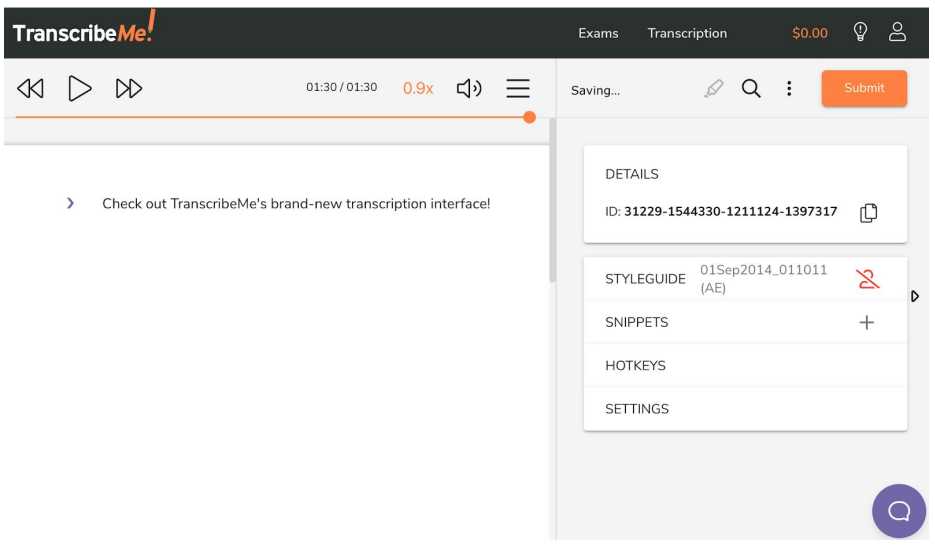
Preparing for a transcription test requires not only strong listening abilities but also a deep understanding of accurate transcription techniques. As the demand for skilled transcribers increases, mastering this process becomes essential for those looking to enter the field or enhance their qualifications. Achieving success in this assessment is about more than just completing tasks; it’s about delivering precise and high-quality work under pressure.
Preparation is key. Familiarizing yourself with the test format, understanding the tools at your disposal, and practicing your skills are all important steps in ensuring you’re ready for any challenge that comes your way. Whether you’re dealing with complex audio files or tight time limits, knowing how to approach these elements can make a significant difference in your performance.
In this guide, we will explore strategies, tips, and techniques to help you improve your transcription accuracy and efficiency, giving you the confidence to tackle any challenges you might face during the evaluation process. From effective listening techniques to time management, each aspect plays a role in achieving top results.
Comprehensive Guide to Transcription Assessment
Achieving success in a transcription challenge requires more than just basic knowledge of typing or listening. It’s about mastering the art of converting spoken language into written form with speed and precision. This process involves understanding various tools, techniques, and strategies to overcome the complexities that can arise during the task. Preparing effectively means being ready to face different types of audio content and applying proper techniques to ensure accuracy under timed conditions.
Understanding the Process
One of the first steps in preparing for any transcription assessment is familiarizing yourself with the task structure. The test typically includes several segments where you must transcribe audio recordings that vary in terms of clarity, speed, and accents. Understanding these factors and how they affect transcription will help you develop a strategy for handling them. Practicing with different audio types and learning how to identify the key elements in each recording can greatly improve your performance.
Techniques for Success
To excel, it’s essential to master both technical skills and mental preparation. Techniques like active listening, using transcription software effectively, and maintaining focus are critical to improving your efficiency and output quality. Additionally, learning to manage time effectively will help you complete the task within the allotted time frame, which is an important factor in this type of assessment.
How to Prepare for the Test
Preparation is the key to performing well in any transcription challenge. A focused approach that combines practice, knowledge, and strategy will significantly improve your chances of success. The goal is not only to complete the task but to do so with accuracy and efficiency. Familiarity with the tools, techniques, and specific requirements of the task can help you feel more confident when it’s time to take the test.
Start by reviewing the format of the test and understanding what types of content you will be working with. Practicing with various audio recordings will help you get accustomed to different speaking styles, accents, and recording qualities. Focus on sharpening your listening skills and improving your typing speed, as these are essential elements for success. Additionally, learning how to use transcription software and tools will streamline the process and boost your productivity.
Understanding Transcription Assessment Format
To perform well in a transcription challenge, it’s crucial to understand the structure and expectations of the task. The format typically consists of multiple segments where you will transcribe various audio recordings. Each segment may vary in difficulty based on factors like audio quality, speaker accents, and the complexity of the language used. Familiarity with the test structure and practicing under similar conditions can greatly enhance your preparation.
Key Components of the Test
The assessment generally includes different types of content, such as interviews, lectures, or conversations, each presenting unique challenges. These elements are designed to test your ability to accurately capture spoken words in written form under time constraints. Knowing what to expect in each segment can help you adapt your strategy accordingly.
Test Breakdown
The following table summarizes the typical structure and features of the transcription task:
| Segment Type | Difficulty | Duration |
|---|---|---|
| Clear Speech | Easy | 5 minutes |
| Accented Speech | Moderate | 7 minutes |
| Technical Content | Hard | 8 minutes |
| Background Noise | Challenging | 10 minutes |
By understanding the different types of segments and their characteristics, you can develop strategies to tackle each one effectively and improve your overall performance.
Common Challenges and How to Overcome Them
During a transcription task, there are several obstacles that may arise, each requiring specific strategies to manage. These challenges can range from poor audio quality to unfamiliar accents, and even the pressure of working under time constraints. Being aware of these potential issues and preparing solutions in advance can significantly improve your ability to handle them efficiently.
One common challenge is dealing with unclear audio or background noise, which can make it difficult to accurately capture every word. In such cases, it’s important to adjust the audio settings or use transcription tools that allow you to slow down or enhance the playback. Additionally, taking brief pauses during difficult sections can give you time to review and ensure accuracy.
Another hurdle is understanding various accents or speech patterns. To overcome this, you can practice with diverse audio sources to familiarize yourself with different speaking styles. This will increase your confidence in handling a range of dialects and pronunciations.
Lastly, time pressure is often a major source of stress during transcription tasks. To combat this, it’s essential to practice under timed conditions regularly. This helps you get accustomed to working efficiently while maintaining quality, allowing you to meet deadlines without compromising accuracy.
Top Tips for Accurate Transcription
Accuracy is the cornerstone of successful transcription. Achieving high-quality results requires not only fast typing but also sharp listening, attention to detail, and an understanding of effective strategies. The following tips are designed to help you improve your transcription skills and minimize errors, ensuring you produce clear and precise text every time.
Essential Techniques for Precision
To ensure accuracy, it’s essential to listen carefully and focus on the context of the conversation. Repeating sections of the audio, when necessary, can help clarify any unclear words or phrases. Additionally, learning to identify key terms and context cues in spoken language will allow you to maintain the integrity of the transcript even when certain words are difficult to catch.
Utilizing Tools to Enhance Accuracy
Various tools can assist in improving transcription accuracy. Using transcription software with features such as automatic playback control, text expansion, and timestamp insertion can help streamline the process. Additionally, using foot pedals or shortcut keys can allow you to pause, rewind, or play back audio without taking your hands off the keyboard, improving your workflow.
The following table highlights some of the most effective tools and practices to boost your transcription precision:
| Tool/Practice | Benefit |
|---|---|
| Playback Speed Control | Allows you to slow down or speed up audio for clearer understanding |
| Foot Pedal | Enables hands-free control of audio, improving efficiency |
| Context Clues | Helps decipher difficult words or phrases based on the overall topic |
| Timestamping | Marks specific points in the audio, making editing easier |
By incorporating these techniques and tools, you can significantly enhance your accuracy and confidence during any transcription task.
Improving Your Listening Skills for Transcription
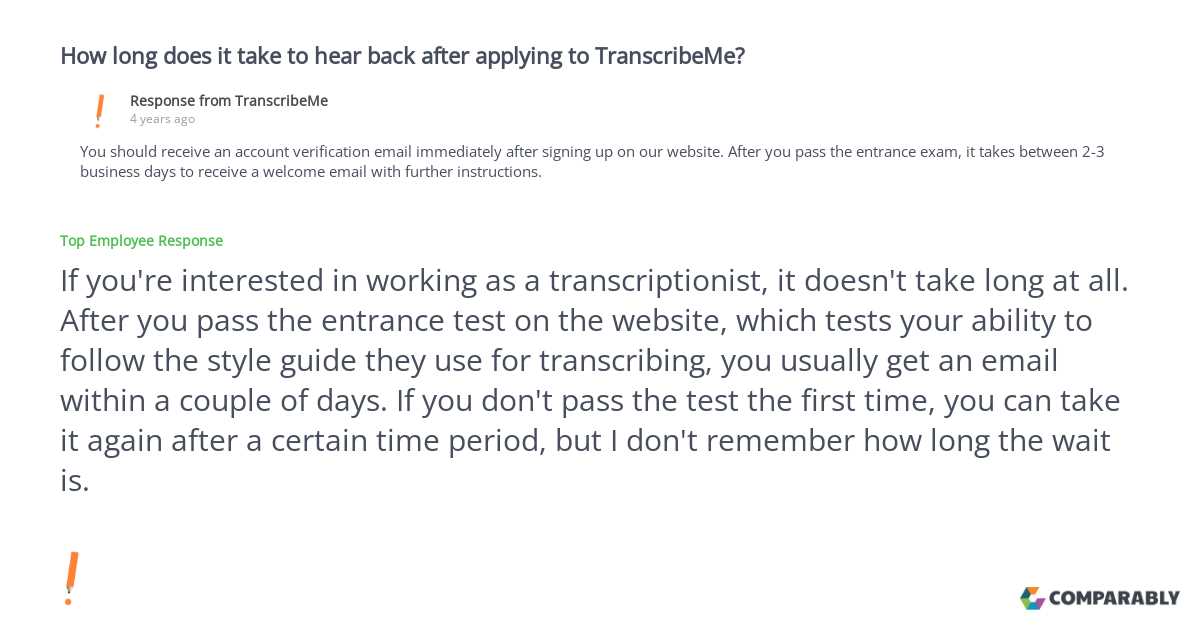
Effective listening is one of the most critical skills for transcription work. It’s not just about hearing the words; it’s about understanding context, tone, and nuances that may not be immediately clear. Developing strong listening skills will allow you to accurately capture what is being said, even in challenging circumstances. This involves practice and the use of specific strategies to enhance your ability to comprehend and transcribe speech quickly and efficiently.
One key to improving listening skills is active listening, which involves focusing entirely on the speaker and minimizing distractions. Paying close attention to the structure and flow of the conversation can help you identify the most important parts of the speech and better understand what’s being said. Additionally, practicing with various types of audio, including different accents and background noise, can help you adapt to the diversity of real-world transcription scenarios.
Another useful approach is breaking down audio segments into smaller parts. This can help reduce the pressure of transcribing long recordings in one go. By replaying short segments multiple times, you can ensure that you’re capturing the full meaning without missing details.
How to Manage Time During the Assessment
Time management is a crucial aspect of any transcription challenge. Successfully completing the task within the allotted time requires strategic planning, focus, and efficient work practices. It’s easy to get caught up in individual segments or overthink difficult parts, but with proper time management, you can ensure that you stay on track and maintain the quality of your work throughout.
To manage your time effectively, it’s important to follow a few key strategies:
- Set a Clear Time Limit for Each Segment: Break down the total time into smaller chunks for each recording. This will help you pace yourself and avoid spending too much time on any one section.
- Prioritize Difficult Sections: If you encounter particularly challenging parts, don’t dwell on them for too long. Mark them and move on. You can always come back later if needed.
- Use Keyboard Shortcuts: Learning and utilizing shortcuts for your transcription software will save time, allowing you to pause, rewind, or adjust playback speed quickly.
- Practice Under Time Pressure: Regularly practice transcription tasks under timed conditions. This will help you become accustomed to working efficiently and managing your pace.
By following these strategies, you can improve your time management skills and complete the task efficiently without sacrificing the quality of your work.
Resources to Practice Before the Assessment
Before taking on a transcription challenge, it’s essential to practice with a variety of resources to develop your skills and build confidence. Accessing different types of content will help you become familiar with various speaking styles, accents, and levels of complexity. By regularly practicing with appropriate materials, you can enhance both your listening and typing skills, ensuring that you’re well-prepared for the task ahead.
Here are some valuable resources to help you prepare:
- Audio Transcription Websites: Websites that offer transcription practice exercises with audio clips of various difficulties are a great starting point. They allow you to practice with real-world recordings and often come with feedback.
- Podcasts and Interviews: Listening to podcasts and interviews on a variety of topics will expose you to different accents, speech patterns, and conversational tones. This type of material mimics real-life transcription scenarios.
- Public Speeches and Lectures: Transcribing lectures or public speeches can help you practice dealing with formal language, technical vocabulary, and diverse accents. Many universities and educational platforms provide free access to such content.
- YouTube Videos: YouTube offers a vast library of videos with varying levels of clarity, background noise, and speech tempo. You can adjust playback speed and pause at any moment to refine your transcribing abilities.
- Transcription Software with Practice Modules: Some transcription software offers practice modules designed to simulate real tasks. These often include a variety of audio qualities and different levels of difficulty.
By incorporating these resources into your preparation routine, you’ll gain the experience needed to tackle any transcription task with ease and accuracy.
What to Expect in the Transcription Assessment
When preparing for a transcription challenge, it’s essential to understand what to expect during the evaluation. The process can vary depending on the platform or service, but there are some common elements that you can anticipate. Knowing what’s involved will help you feel more confident and better equipped to handle the task efficiently.
Here’s a general overview of what you can expect:
- Audio Quality: The recordings provided for transcription may vary in quality. Some may have background noise, accents, or unclear speech. It’s important to be prepared to handle these types of challenges by adjusting playback speed or pausing frequently.
- Different Speakers: You may encounter recordings with multiple speakers, including interviews or group discussions. This will require you to distinguish between voices and maintain accurate punctuation and speaker labels.
- Time Constraints: Most transcription tasks come with a time limit. While the time may vary, it’s essential to stay on track and manage your pace to ensure that you complete the task on time without compromising accuracy.
- Various Topics: The material you’ll transcribe could cover a wide range of topics, from casual conversations to technical discussions. Being prepared for a variety of subject matter will help you stay focused and adaptable.
- Formatting Requirements: Certain platforms may have specific formatting rules, such as how to punctuate dialogue, mark inaudible parts, or timestamp sections of the audio. Familiarize yourself with these guidelines before starting.
Understanding these aspects of the assessment will help you approach the task with clarity and focus, allowing you to perform at your best and meet the required standards.
How to Handle Difficult Audio Files
Transcribing challenging audio files is a common aspect of transcription tasks. These files often contain background noise, unclear speech, or multiple speakers, which can make it difficult to capture every word accurately. However, there are several strategies you can employ to improve your results and ensure the transcription process remains efficient.
One of the first steps in dealing with difficult audio is to adjust the playback speed. Slowing down the recording can help you catch words or phrases that might be hard to distinguish at normal speed. Many transcription tools offer this feature, allowing you to find a pace that suits your listening abilities.
Another effective approach is using headphones with noise-canceling capabilities. These can significantly reduce ambient sounds, making it easier to focus on the voices in the recording. If the audio quality is poor or the speakers are hard to understand, headphones can make a noticeable difference.
In cases where certain sections of the recording are inaudible or unclear, consider marking them as “inaudible” and moving on. It’s important not to dwell on these parts for too long. Additionally, replay the audio in smaller chunks, pausing frequently, which will help you focus on understanding each segment thoroughly.
Lastly, don’t hesitate to use external resources if available. For instance, you can use an online audio enhancement tool or software that cleans up background noise and improves clarity, allowing for more accurate transcription.
Transcription Assessment Scoring Explained
Understanding how your performance is evaluated during a transcription task is crucial for success. Most transcription platforms use a scoring system to measure the accuracy, formatting, and overall quality of your work. Familiarizing yourself with the factors that contribute to your score will help you focus on the areas that matter most and improve your chances of passing the assessment.
Typically, the evaluation is based on several key criteria:
Key Factors in Scoring
- Accuracy: The most important aspect of any transcription task is accuracy. This includes spelling, grammar, and ensuring that every word, including speaker labels, is transcribed correctly. Errors will result in score deductions.
- Formatting: Proper formatting is essential for readability and professionalism. This includes using correct punctuation, spacing, and handling time stamps or inaudible sections according to the provided guidelines.
- Consistency: Consistency in how you handle speech patterns, abbreviations, and technical terms is another factor considered in scoring. Transcribing the same way throughout the entire task helps maintain clarity.
- Completeness: The transcription should be as complete as possible. Omitting significant portions of the audio, especially if they contain critical information, will negatively affect your score.
How Scoring is Calculated
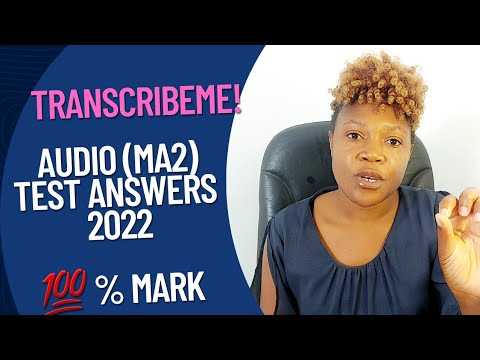
Some platforms assign a score based on the percentage of errors detected in your transcription, while others may use a point-based system. Usually, these scoring systems are designed to penalize major mistakes more heavily than minor ones, so it’s important to prioritize overall accuracy and consistency.
By focusing on these key factors, you can enhance your performance and improve your score on any transcription assessment.
Common Mistakes to Avoid in the Assessment
During a transcription challenge, it’s easy to make mistakes that can affect the quality of your work and ultimately your performance score. Being aware of the most common pitfalls can help you stay on track and deliver a high-quality result. Here are some of the most frequent errors to watch out for and avoid while working through the task.
One of the primary mistakes is poor accuracy in transcribing words or phrases. Mishearing or misinterpreting audio can lead to significant errors, especially if the words are critical to understanding the context. It’s essential to listen carefully and double-check for any potential mistakes before finalizing the transcription.
Another common issue is improper formatting. Inconsistent punctuation, incorrect speaker labels, or failure to follow the required guidelines can negatively impact your score. Always ensure that you adhere to the formatting rules provided by the platform or service.
Additionally, neglecting to mark inaudible sections can result in penalties. If you cannot fully understand a part of the audio, it’s important to note it as “inaudible” or follow the specific instructions provided by the task. Failing to do so may lead to confusion and decrease the overall quality of your work.
Lastly, rushing through the transcription is a mistake that many make. While there may be a time limit, taking the time to properly listen, verify, and format your work will lead to a more accurate and professional result. Avoid the temptation to speed through sections, as this often results in careless errors.
Best Software Tools for Transcription Practice

To improve your transcription skills, using the right software tools can make a significant difference. These tools offer features such as audio playback controls, transcription templates, and error-checking capabilities that can help you practice effectively and enhance your performance. Whether you’re just starting out or looking to refine your skills, the following tools are highly recommended for transcription practice.
Top Tools for Practicing Transcription
- Express Scribe: This transcription software is popular for its ease of use and essential features, such as variable speed control, foot pedal support, and audio enhancement options. It allows you to slow down or speed up audio to match your typing speed.
- OTranscribe: A free, open-source tool designed for manual transcription. It provides an integrated interface for both typing and controlling the audio, allowing for efficient navigation through recordings.
- InqScribe: Known for its intuitive interface and powerful features, InqScribe is ideal for both transcription beginners and professionals. It offers customizable keyboard shortcuts and variable playback speed for a smooth experience.
- Foot Pedal Software: Many transcriptionists prefer using foot pedals to control audio playback hands-free. Software like Express Scribe or Transcribe can be paired with these pedals to improve efficiency.
Additional Useful Tools
- Transcribe: An online tool designed to make transcription easier by providing shortcuts and a seamless audio player. Transcribe allows you to upload files, adjust audio speed, and add timestamps, helping you stay organized.
- Google Docs Voice Typing: While not specifically a transcription tool, Google Docs’ voice typing feature can be a good practice tool for improving typing speed and accuracy as you transcribe spoken content.
Using these software tools in combination with consistent practice can greatly help you build your transcription skills and improve both speed and accuracy. Choose the ones that best fit your needs and start practicing today.
Certification Benefits for Transcription Assessments
Obtaining a certification for transcription skills can offer numerous advantages to individuals looking to advance in the field. It not only validates your ability to produce accurate and efficient work but also opens up new professional opportunities. Certification demonstrates to employers and clients that you have the necessary expertise and can handle transcription tasks with a high degree of proficiency. Below are some key benefits of earning this certification.
Enhanced Job Opportunities
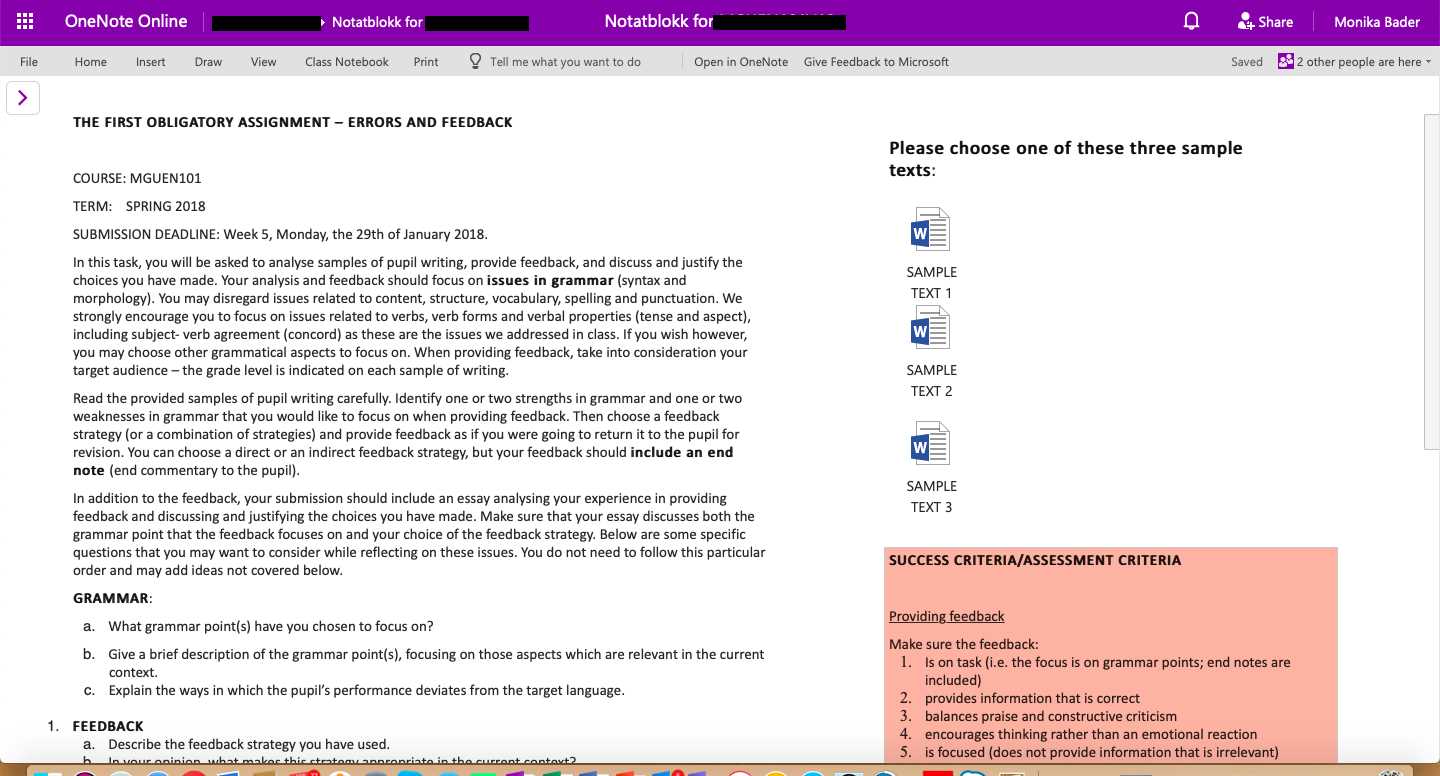
One of the primary benefits of certification is the potential for improved job prospects. Many companies prefer to hire certified professionals, as it assures them that the candidate has the required skills to meet industry standards. With certification, you are more likely to be considered for higher-paying roles or advanced transcription projects, providing you with a competitive edge in a crowded job market.
Increased Earning Potential
Certified transcriptionists often earn more than their non-certified counterparts. By demonstrating your expertise through certification, you signal to clients and employers that your work is of a higher quality. This can lead to higher-paying opportunities, as well as long-term contracts, giving you more financial stability in the profession.
Improved Skillset and Confidence
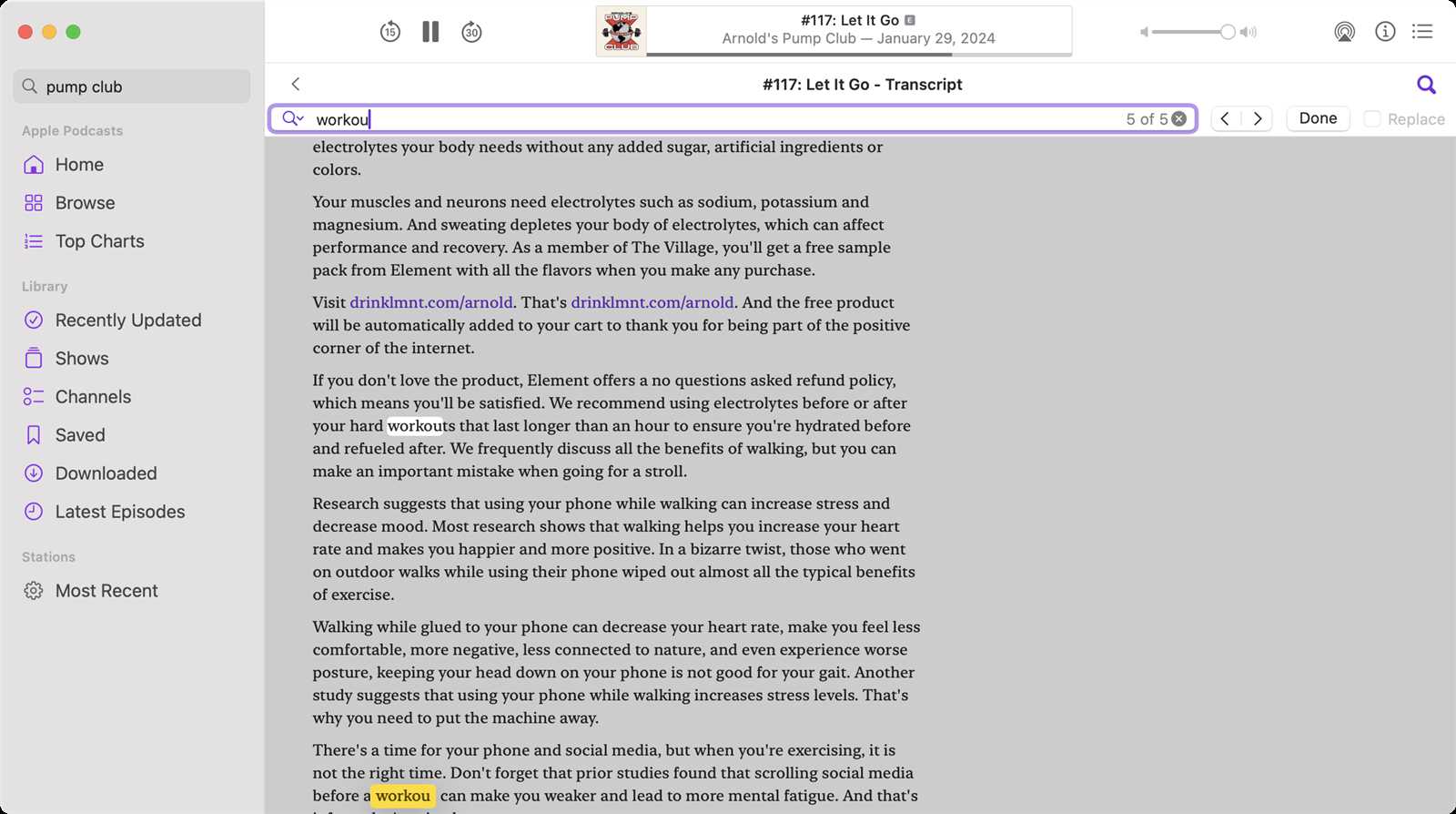
Working toward certification allows you to refine your transcription skills through focused practice. As you prepare for the certification process, you gain a deeper understanding of transcription techniques, formatting standards, and error-checking methods. This preparation not only improves your performance but also boosts your confidence when tackling professional tasks.
In summary, obtaining a transcription certification can be a game-changer for your career. It improves job prospects, boosts earning potential, and enhances your overall skillset, making it a valuable investment for anyone serious about pursuing a career in transcription.
How to Stay Focused During the Assessment
Maintaining focus during a test is essential for achieving accurate results. Distractions can easily cause errors or slow down progress, so it’s important to adopt strategies that help you stay engaged and clear-headed throughout the entire process. Below are a few effective tips to help you stay focused and perform at your best.
Create an Optimal Environment
Start by setting up a quiet, comfortable space where you can work without interruptions. Minimize distractions by turning off unnecessary devices, such as your phone or social media notifications. A clean, organized environment can also help reduce mental clutter and keep you focused on the task at hand.
Manage Your Time Wisely
Time management is crucial to staying on track. Break the task into manageable sections and set small, achievable goals. Focus on completing one segment at a time, and don’t worry about the entire task. This will help prevent feeling overwhelmed and allow you to maintain a steady pace.
Take Short Breaks When Needed
Working for long stretches without a break can lead to fatigue and reduced focus. Schedule brief intervals to rest your mind, such as a 5-minute break every 30 minutes. Use this time to stretch, hydrate, or take a deep breath. This will help you refresh and return to the task with renewed attention.
Stay Calm and Confident
Stress can negatively impact focus. Stay calm by practicing relaxation techniques, such as deep breathing or positive visualization. Trust in your preparation, and remind yourself that you are capable of completing the task successfully. A confident mindset will help you stay focused and handle challenges more effectively.
In conclusion, by setting up a distraction-free environment, managing time effectively, and practicing relaxation, you can improve your concentration and perform your best during the assessment.
How to Pass the Assessment with Confidence
Achieving success in a transcription assessment requires more than just technical skills–it also involves preparation, strategy, and the right mindset. By developing a structured approach and staying focused, you can confidently face any challenge and perform at your best. Below are key tips to help you pass the evaluation with confidence.
Build Your Skills Through Consistent Practice
One of the most effective ways to prepare for a transcription task is through consistent practice. The more you practice, the more comfortable and efficient you’ll become. Focus on improving your typing speed, accuracy, and ability to decipher different accents and audio qualities. Additionally, practice with various types of audio files to familiarize yourself with a wide range of challenges.
Understand the Guidelines Thoroughly
Each transcription assessment may have specific guidelines or expectations. Before starting, ensure you have a clear understanding of the instructions provided. Pay attention to details such as formatting rules, time constraints, and how you should handle difficult sections. This understanding will give you the confidence to approach the task correctly and avoid common mistakes.
Stay Calm and Focused
Maintaining composure during the task is essential for making sound decisions and staying productive. Practice relaxation techniques to help you manage any stress. Take deep breaths, focus on the task at hand, and remind yourself that you’ve prepared well. Staying calm will allow you to process the audio accurately and handle any obstacles that may arise.
| Key Strategies | Benefits |
|---|---|
| Consistent Practice | Improves typing speed, accuracy, and listening comprehension. |
| Understanding Guidelines | Ensures you follow the correct format and instructions, avoiding penalties. |
| Staying Calm | Helps you focus, reduce errors, and manage pressure effectively. |
By combining these strategies–practice, understanding, and composure–you’ll be able to approach the transcription challenge with confidence. The key is preparation, persistence, and a calm mindset, all of which will help you succeed.